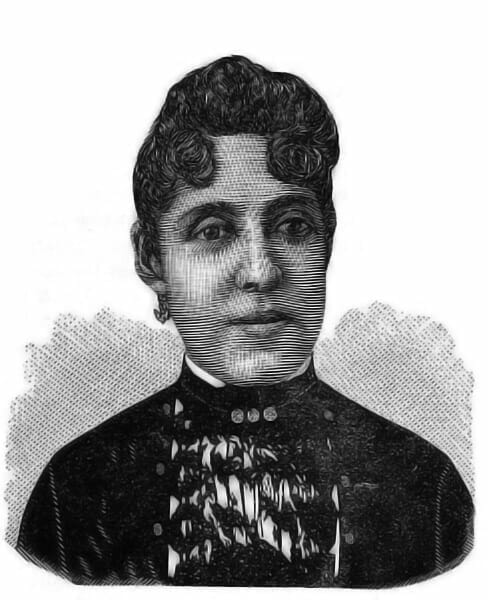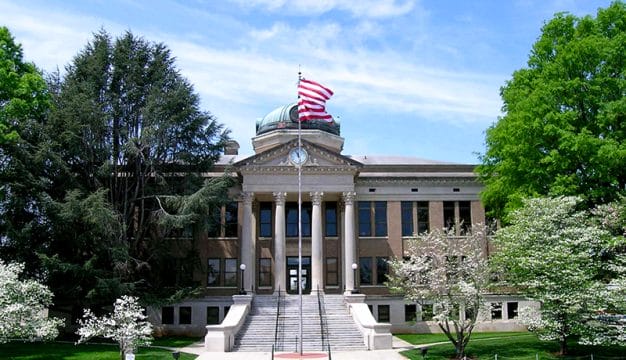Amelia Tilghman
Trained as an educator, Amelia L. Tilghman (1856-1931) was also noted in her day as a musician, journalist, and premier singer. She lived in Alabama for a short time in the mid-1880s, teaching music and publishing a monthly newspaper for the black community in Montgomery, and became acquainted with many of the elites at Tuskegee Normal School (later Tuskegee University).
 Amelia Tilghman
Tilghman (pronounced Tillman) was born on September 6, 1856, the fifth of seven children. Her mother, Margaret Reynolds Tilghman, worked as a laundress, and her father, Henry Hyland Tilghman, was a servant. She grew up in the free black community of Washington, D.C. She exhibited unusual musical talent as a child, but little is known about her early music instruction. In 1868, Tilghman enrolled in the Normal Department at Howard University and graduated with honors in 1871. She then taught in the city’s Black public schools and pursued a singing career.
Amelia Tilghman
Tilghman (pronounced Tillman) was born on September 6, 1856, the fifth of seven children. Her mother, Margaret Reynolds Tilghman, worked as a laundress, and her father, Henry Hyland Tilghman, was a servant. She grew up in the free black community of Washington, D.C. She exhibited unusual musical talent as a child, but little is known about her early music instruction. In 1868, Tilghman enrolled in the Normal Department at Howard University and graduated with honors in 1871. She then taught in the city’s Black public schools and pursued a singing career.
In 1880, Tilghman sang in New York City and was the featured guest artist the following year at the Saengerfest in Louisville, Kentucky. That same year she organized and directed a highly regarded Washington, D.C., production of the oratorio Esther, the Beautiful Queen and performed in the title role. This large-scale choral work, written by well-known American hymn composer William Bradbury, remained extraordinarily popular throughout the entire United States for decades. The number and variety of performers called for in the piece’s score—a large chorus, several soloists, and instrumental accompaniment—required Tilghman to recruit many regional musicians. In the early 1880s, Tilghman expanded her professional activities to include journalism and writing; she contributed articles and poetry to periodicals and newspapers, especially the family magazine Our Women and Children.
In 1886, Tilghman moved to Montgomery, where she resided for approximately two years. Although historians have not determined why she relocated to Montgomery, she was likely attracted to the region because of the presence of nearby Tuskegee Normal School. In addition, she may have been responding to the critical shortage of qualified teachers in Alabama’s Black communities. Tilghman spent much of her brief stay in Montgomery teaching piano students and organizing recitals of regional performers. She rekindled her interest in Bradbury’s Esther and once again organized a production of the work, culminating with performances at McDonald’s Opera House in Montgomery in May 1886.
While in Montgomery, Tilghman began to publish a monthly newspaper, Musical Messenger, which probably first appeared in the fall of 1886. With the paper’s debut, Tilghman became the first editor of a periodical dedicated to African American music and musicians. It circulated widely, especially in the eastern half of the United States. As an editor, Tilghman solicited essays and news items from veteran female journalists of her day, including Victoria Earle Matthews and Lucinda Bragg Adams. Issues of the Musical Messenger also included poetry—some written by Tilghman—along with articles on matters of political and social significance to African Americans, including employment, education, and racial discrimination. The Musical Messenger also featured short articles on the activities of Black concert artists and excerpts from recent compositions and arrangements by Black composers. Tilghman fervently believed that African Americans should learn to read music. She urged readers to acquire an appreciation of European classical composers such as Beethoven, Mozart, and Handel. Toward this end, her newspaper carried small advertisements for music teachers and notices of concerts to be given in Black communities.
Tilghman’s work as a community music educator, journalist, and concert producer attracted the attention of several prominent leaders in the region. Although historians cannot as yet conclude that Tilghman ever met Booker T. Washington, her close acquaintance with some of his colleagues suggests that, at the very least, Washington was aware of her accomplishments. One of Washington’s associates who knew Tilghman was Robert Charles Bedford, a white, English-born member of the Board of Trustees of Tuskegee Normal School. Bedford championed her efforts to the northern press and sponsored concerts by her pupils at the Black Congregational church he established in Montgomery. Another of Washington’s circle with whom Tilghman became acquainted was Cornelius N. Dorsette, Alabama’s first licensed Black physician. Also a member of Tuskegee’s board of trustees, Dorsette owned a building in downtown Montgomery that housed his practice, a pharmacy, and Dorsette Concert Hall, where Tilghman and her piano students performed recitals and choral concerts. Washington associate Warren Logan is best remembered as treasurer of Tuskegee Normal School and a bookkeeping instructor, but he also conducted the school’s band and chorus and performed with Tilghman.
In 1888, Tilghman temporarily suspended publication of the Musical Messenger and left Montgomery to accept a teaching appointment at Howe Institute in New Iberia, Louisiana. Not long after her arrival there, family members requested that she return to Washington, D.C., to help care for her ailing mother. Although she resumed publishing the Musical Messenger while there, she discontinued it around 1891, undoubtedly owing to financial constraints. She maintained a private music studio throughout her later years, and newspaper accounts indicate that she published a few music compositions beginning around 1903. Little survives about her final illness and obscure death in Washington, D.C., on December 12, 1931.
In a broad context, Tilghman made significant contributions to the musical history of African Americans after Reconstruction. Her work as an editor helped establish an enduring format for subsequent music reporting within Black communities. Vestiges of the Musical Messenger appeared in publications of the early twentieth century, such as the Negro Music Journal, edited by J. Hillary Taylor, and Music and Poetry, edited by Nora Douglas Holt. Documentation of Tilghman’s contributions to Alabama’s musical activities provides further evidence of the rich and vibrant cultural heritage of black Montgomery in the 1880s. Although a comprehensive history of African American music education and performance in post-Reconstruction Alabama has yet to be written, Tilghman’s story constitutes a compelling and influential chapter.
Additional Resources
Karpf, Juanita. “Amelia L. Tilghman.” In Notable Black American Women, Book II. Edited by Jessie Carney Smith. Detroit: Gale Research, 1996, 643-47.
———. “‘As with Words of Fire’: Art Music and Nineteenth-Century African American Feminist Discourse.” Signs: Journal of Women in Culture and Society 24 (Spring 1999): 603-32.
———. “The Early Years of African American Music Periodicals, 1886-1922: History, Ideology, Context.” International Review of the Aesthetics and Sociology of Music 28 (December 1997): 143-68.
———. “Music in Montgomery’s African American Community, 1886-1887: Amelia Tilghman as Performer, Journalist and Teacher.” Alabama Review 53 (April 2000) 112-39.
———. “Populism with Religious Restraint: William B. Bradbury’s Esther, the Beautiful Queen.” Popular Music and Society 23 (Spring 1999): 1-30.
Penn, Irvine Garland. “Amelia Tilghman.” The Afro-American Press and Its Editors. Springfield, Mass.: Willey, 1891, 401-5.
Scruggs, Lawson A. “Amelia Tilghman.” Women of Distinction: Remarkable in Works and Invincible in Character. Raleigh, N.C.: n.p., 1893, 211-16.



